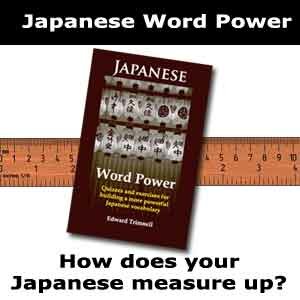
Departments
Intermediate Japanese - Free Online Course

Japanese Grammar Tutorials
Japanese adjectives
From a grammar perspective, Japanese adjectives can be grouped into two classifications: i-adjectives and na-adjectives. These two classifications are subject to different rules of grammar. This is one of those concepts of Japanese that has no exact equivalent in English, in which all adjectives behave more or less the same.
I-adjectives end with the hiragana character i / い, and are conjugated by rules to be discussed below.
Na-adjectives are followed by the hiragana character na /な when they modify a noun.
Let’s look at one example from each category:
i-adjective
na-adjective
高い山
takai yama
high mountain
静かな部屋
shizuka na heya
quiet room
Japanese i-adjectives
The preceding section gave you an idea of the distinction between i-adjectives and na-adjectives. In this section you’ll learn some common i-adjectives; and in the next section we’ll examine their behavior.
Adjective
Hiragana
Romaji
English
高い
たかい
takai
high; expensive
美味しい
おいしい
oishii
delicious; tasty
美しい
うつくしい
utsukushii
beautiful
難しい
むずかしい
muzukashii
difficult
硬い
かたい
katai
hard
若い
わかい
wakai
young
古い
ふるい
furui
old (of objects)
大きい
おおきい
ōkii
big; large
小さい
ちいさい
chiisai
small
低い
ひくい
hikui
low
柔らかい
やわらかい
yawarakai
soft; tender
安い
やすい
yasui
cheap; inexpensive
易しい
やさしい
yasashii
easy; simple
Conjugating i-adjectives
I-adjectives are conjugated (much like Japanese verbs). This is, again, an unfamiliar concept for native English-speakers that will take some getting used to.
The table below contains the various conjugations of a common i-adjective, 高い / takai, in the non-past tense.
non-past
is high/expensive
non-past negative
is not high/expensive
Plain
高い takai
高くない takaku nai
Polite
高いです takai desu
高くありません takaku arimasen
There are a few important points that may not be obvious from the above table, which you should commit to memory:
· An i-adjective can form a grammatically complete predicate, albeit in the plain form. For example:
ガソリンは高い / Gasorin wa takai = Gasoline is expensive.
The above is a grammatically complete sentence in the plain form. To make the convert the sentence to the polite form, you would simply add です/desu.
ガソリンは高いです。/Gasorin wa takai desu. = Gasoline is expensive.
· The plain form of the copula (だ/da) is never used with i-adjectives
Now for the conjugations of the past tense:
past
was high/expensive
past negative
was not high/expensive
Plain
高かった takakatta
高くなかった takaku nakatta
Polite
高かったです
takakatta desu
高くありませんでした
takaku arimasen deshita
As you can see from the above examples, conjugations of the i-adjectives begin with dropping theい / i. Situations in which the final い is dropped are summarized below:
takai → takakatta (past)
takai → takaku nai (negative non-past)
takai → takaku nakatta (negative past)
Conjugating na-adjectives
Na-adjectives are conjugated by attaching the appropriate form of the copula. Both the non-past and past-tense conjugations are given below:
non-past
is quiet
non-past negative
is not quiet
Plain
静かだ shizuka da
静かじゃない shizuka ja nai
Polite
静かです shizuka desu
静かじゃありません shizuka ja arimasen
The past-tense conjugations of the na-adjectives are as follows:
past
was quiet
past negative
was not quiet
Plain
静かだった shizuka datta
静かじゃなかった shizuka ja nakatta
Polite
静かでした shizuka deshita
静かじゃありませんでした shizuka ja arimasen deshita




